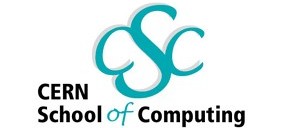iCSC2005
Data Management and Data Bases Theme
Details of all lectures
Fundamentals of Database Design
| |
|
Wednesday 23 February |
|
|
10:05 - 11:00 |
Lecture 1 |
Fundamentals of Database Design |
Zornitsa
Zaharieva |
|
The objective of the lecture is to briefly
introduce the notion of a database system and then to give a
practical overview of the process of designing a database
schema.
The aim is to show how to end up with a database model
starting from the row data. In this process the
participants will learn what is a conceptual design of a
database (entity-relationship model), how to transfer the
conceptual design to a logical design (relational model),
get acquainted with the Data Definition Language as part of
SQL, look at some common pitfalls when designing a database
schema. |
|
1.
Introducing database concepts
2.
Conceptual Design – Entity-Relationship Model
3.
Logical Design
4.
Relational Database Model
5.
Introducing SQL (Structured Query Language)
6.
Implementing the relation model through the DDL part
of SQL
7. Effective
design best practices and common pitfalls |
SQL: basics and recent advances
| |
|
Wednesday 23 February |
|
|
11:30 12:25 |
Lecture 2 |
SQL: basics and recent advances |
Miguel Anjo |
|
At the end of this lecture it is expected
that the participants have heard about the main features
available for interacting with a database. The base of the
session is to look in detail at all the possibilities of
database queries, with particular attention to advanced
SELECT forms. Most of the session will be based on SQL92
standard and a small part on Oracle features.
1. DML basics: insert/update/delete
2. SELECT basics
-
'||', column pseudonyms, NVL
-
union, union all, intersect, minus
-
restricting: where, in, like, distinct, and/or, not, is
[not] null, any, all
-
sorting: order by, asc/desc
-
aggregation: count, sum, max, avg, group by, having
-
joins: equijoins, outerjoins
-
charater manipulation functions: contat, length, lower,
upper, ltrim, substr, ...
-
numeric functions: abs, ceil, floor, mod, power, round,
sign, sqrt, trunc, ...
-
date functions: to_date, last_day, next_day,
NLS_DATE_FORMAT, round, sysdate, trunc
-
convertion functions: to_char, to_date, to_number
-
other functions: decode, greatest, least, nvl, uid, user,
vsize
3.
Advanced SELECT
4. Indexes b-tree
5. Transactions
6. Multi-dimensional aggregation
|
Advanced Database Features
| |
|
Wednesday 23 February |
|
|
14:00 - 14:55 |
Lecture 3 |
Advanced Database Features |
Zornitsa
Zaharieva
Miguel Anjo |
|
This lecture will give an overview of what a database offers
to improve the performance of very big databases
(index-organized tables, partitioning, etc.) and certain
features for protecting the data when working in a
multi-user environment in a database. It will also show how
to put more logic into the database layer and make the
database ‘smarter’ by capturing database events through
triggers or adding programming logic to the execution of SQL
commands (PL/SQL functions). The lecture is heavily based on
the Oracle implementation of all these features.
-
Creating a table from a table
-
Creating an index-organized tables
-
Other indexes (bitmap, function based, reverse,
multi-column)
-
Using partitioned tables
-
By what authority – users and privileges
-
Views
-
Materialized views
-
Accessing Remote Data - synonyms, db links
-
Introduction to PL/SQL
-
Triggers
-
PL/SQL procedures, functions and packages
|
Performance Optimization and Tuning
| |
|
Wednesday 23 February |
|
|
15:05 16:00 |
Lecture 4 |
Performance Optimization and Tuning |
Michal Kwiatek |
|
The aim of this lecture is to give you an
idea of what database performance tuning is from the point
of view of an application developer and not that of a
DataBase Administrator (DBA ). Why do we need to tune at
all? How can we make tuning experts unnecessary? Application
tuning is the main topic of the lecture and its substantial
part is devoted to SQL statement tuning. But the larger
picture is also there! Common pitfalls are listed and you
will see real life examples and problems. |
|
Come to this lecture if you want to
learn:
-
what tuning is, why it's perceived as
magic and how to tame it,
-
when to start tuning a database
application,
-
what techniques and tools to use,
-
what is an SQL optimizer and how
to make it work better,
-
how to read an execution plan,
-
what types of indexes to use and why,
-
why timing and logging is so
important,
-
why avoid using optimizer hints
All
these issues are presented based on an Oracle database. But
they are also relevant to other database systems! |
Data Mining: Extracting knowledge from data
| |
|
Wednesday 23 February |
|
|
16:30 - 17:25 |
Lecture 5 |
Data Mining: Extracting knowledge from data |
Petr Olmer |
|
A hidden knowledge can be stored in
databases. How to discover it? How can we search for an
answer, if we do not know a question? Data mining can help.
The objective of the lecture is to introduce basic methods
of knowledge discovery in structured data, and also in an
unstructured text. |
|
1. What and why
2. Data mining as a process
-
CRISP-DM method
-
Predictive and
descriptive tasks
-
Concepts,
instances, attributes
3. Models and algorithms
-
Decision trees
-
Classification rules
-
Association rules
-
k-nearest neighbors
-
Cluster analysis
4. Text mining: How does
Google News work
|
|
|
|

